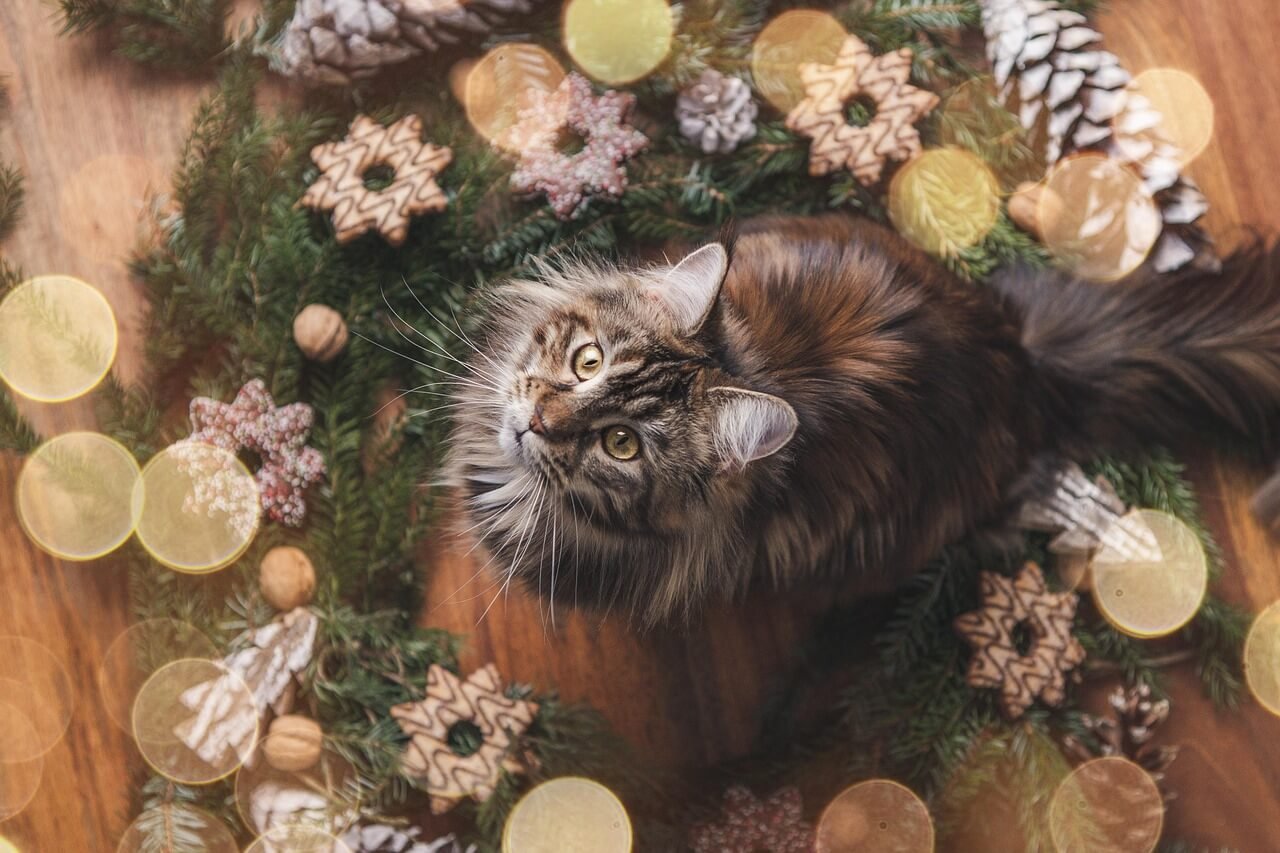Do You Have to Trim Cat Nails?
Cats are naturally equipped with sharp claws, which they use for scratching, climbing, and self-defense. However, many cat owners wonder whether trimming their feline friend’s nails is necessary or even safe. While cats typically maintain their claws by scratching surfaces, there are situations where nail trimming becomes essential for both the cat’s well-being and your household harmony. Understanding when, why, and how to trim your cat’s nails can help you build a stronger bond with your pet while ensuring their comfort and safety. Let’s explore everything you need to know about this important aspect of cat care.
Why Trimming Cat Nails Is Important
Trimming your cat’s nails isn’t always mandatory, but it can provide numerous benefits for both you and your furry companion. Here are some reasons why regular nail care might be worth considering.
Prevent Overgrown Nails:
If a cat’s nails grow too long, they can curl back into the paw pad, causing pain and potential infections. Regular trimming prevents this issue.Protect Your Furniture:
Sharp claws can damage furniture, carpets, and curtains. Trimming reduces the risk of deep scratches and tears.Avoid Accidental Scratches:
Cats may unintentionally scratch their owners during playtime. Blunt nails minimize the risk of painful injuries.Support Senior Cats:
Older cats may struggle to scratch and wear down their nails naturally, making trimming an essential part of their grooming routine.Reduce Stress During Vet Visits:
A cat with trimmed nails is less likely to accidentally injure themselves or others during stressful situations like vet appointments.
By addressing these concerns, nail trimming becomes a practical way to enhance your cat’s quality of life while maintaining a peaceful home environment.
Signs Your Cat Needs Nail Trimming
How do you know when it’s time to trim your cat’s nails? Look out for these signs that indicate your feline friend could benefit from a little grooming assistance.
Audible Clicking Sounds on Hard Floors:
If you hear your cat’s nails clicking as they walk across tile or hardwood floors, it’s a clear sign their nails are too long.Nails Catching on Fabric or Carpet:
Overgrown nails often snag on materials, which can be uncomfortable for your cat and damaging to your belongings.Visible Curling of the Nails:
Check your cat’s paws—if their nails are starting to curve inward, immediate trimming is necessary to prevent injury.Increased Scratching Behavior:
Excessive scratching may indicate that your cat is trying to file down their nails but struggling to do so effectively.Difficulty Retracting Claws:
Healthy cat nails should retract easily. If your cat’s claws remain extended, it could signal overgrowth or an underlying health issue.
Recognizing these signs ensures you address nail issues promptly, keeping your cat comfortable and happy.
Check this guide 👉Why Is Your Cat Biting Nails? Best 7 Health Tips!
Check this guide 👉The Art of Trimming Your Cats Nails: Best 7 Expert Care Tips
Check this guide 👉Understanding Cat Ingrown Nails: Best 7 Health Tips!

Benefits of Trimming Cat Nails | Risks of Ignoring Nail Care |
|---|---|
Prevents overgrown nails | Risk of nails curling into paw pads |
Protects furniture and household items | Potential for painful scratches |
Reduces accidental injuries to humans | Increased likelihood of infections |
Supports senior cats’ mobility | Damage to carpets, fabrics, and floors |
Enhances overall grooming routine | Stress during vet visits or handling |
Step-by-Step Guide to Trimming Cat Nails Safely
Trimming your cat’s nails doesn’t have to be daunting—with patience and preparation, it can become a simple part of your routine. Follow these steps to ensure a smooth and stress-free experience.
Choose the Right Tools:
Invest in high-quality cat nail clippers or scissors designed specifically for small animals. Avoid using human nail clippers, as they can crush the nail.Find a Calm Environment:
Choose a quiet space where your cat feels safe and relaxed. This minimizes distractions and reduces anxiety during the process.Introduce the Clippers Gradually:
Allow your cat to sniff and inspect the clippers before using them. Reward them with treats to create positive associations.Identify the Quick in Light-Colored Nails:
The quick is the pink part inside the nail containing nerves and blood vessels. Avoid cutting into it to prevent pain and bleeding.Trim Small Sections at a Time:
Cut only the tip of each nail rather than attempting large cuts. For dark nails, trim cautiously to avoid hitting the quick.
With practice, nail trimming can become a bonding experience that keeps your cat healthy and comfortable.
Tips for Handling a Reluctant Cat
Not all cats enjoy having their nails trimmed, and some may resist the process entirely. These tips can help you manage a reluctant feline with care and patience.
Start Slowly:
Begin by gently touching your cat’s paws during playtime or cuddles. Gradually increase contact until they tolerate paw handling.Use Positive Reinforcement:
Reward your cat with treats, praise, or toys after each successful interaction. This encourages cooperation over time.Keep Sessions Short:
Limit trimming sessions to just a few nails at a time to prevent overwhelming your cat. You can finish the rest later.Stay Calm and Confident:
Cats pick up on your energy—if you’re nervous, they’ll sense it. Approach the task calmly and confidently to reassure them.Ask for Assistance if Needed:
If your cat is particularly resistant, consider asking a friend or family member to help hold them securely while you trim.
With patience and consistency, even the most stubborn cats can learn to accept nail trimming as part of their routine.
Common Mistakes to Avoid When Trimming Cat Nails
Trimming your cat’s nails can be tricky, especially if you’re new to the process. Avoiding common mistakes ensures a safer and more comfortable experience for both you and your feline friend.
Using Dull or Improper Tools:
Dull clippers can crush the nail instead of cutting it cleanly. Always use sharp, cat-specific nail trimmers for precision.Cutting Too Much at Once:
Removing large portions of the nail increases the risk of hitting the quick. Trim small bits gradually to stay safe.Forcing Your Cat to Stay Still:
Forcing a struggling cat can lead to injury or reinforce negative associations with nail trimming. Take breaks if needed.Ignoring Signs of Stress:
If your cat shows signs of anxiety, such as growling or hissing, pause the session and try again later when they’re calmer.Skipping Regular Maintenance:
Waiting too long between trims makes the task harder and increases the likelihood of overgrown nails. Stick to a consistent schedule.
By steering clear of these pitfalls, you can make nail trimming a smoother and less stressful process for everyone involved.
Alternative Solutions for Nail Care
If trimming your cat’s nails proves too challenging, there are alternative ways to manage their claws while keeping them healthy and your home intact. These options provide flexibility based on your cat’s personality and lifestyle.
Scratching Posts and Pads:
Providing sturdy scratching surfaces helps cats naturally file down their nails, reducing the need for frequent trimming.Soft Paws Nail Caps:
These non-toxic caps fit over your cat’s nails, preventing damage to furniture and accidental scratches without harming the nail itself.Regular Playtime:
Engaging your cat in active play encourages natural behaviors like clawing and stretching, which can help wear down their nails.Professional Grooming Services:
Some cats respond better to professional groomers who specialize in handling nervous or resistant pets.Environmental Enrichment:
Adding climbing trees or textured surfaces gives your cat opportunities to scratch and maintain their nails independently.
These alternatives offer creative solutions for cat owners seeking less hands-on approaches to nail care.
How to Train Your Cat to Accept Nail Trimming
Training your cat to tolerate—and maybe even enjoy—nail trimming takes time and patience. By creating positive experiences, you can transform this chore into a bonding opportunity.
Start with Gentle Paw Touches:
Begin by softly touching your cat’s paws during calm moments. Reward them with treats to associate paw handling with positivity.Introduce the Clippers Gradually:
Let your cat sniff and explore the clippers without using them immediately. This reduces fear of unfamiliar objects.Practice Without Cutting:
Simulate the trimming process by holding the clippers near their nails without actually cutting. Follow up with praise or treats.End Sessions on a Positive Note:
Keep sessions short and always finish with something your cat enjoys, like playtime or a favorite snack.Be Consistent but Patient:
Regular practice builds trust over time. Don’t rush the process—let your cat set the pace for progress.
With persistence and kindness, training can turn nail trimming into a stress-free routine that benefits both you and your cat.
Frequently Asked Questions About Trimming Cat Nails
How often should I trim my cat’s nails?
Most cats need their nails trimmed every 2-4 weeks, depending on how quickly they grow and whether they scratch regularly.
What if I accidentally cut the quick?
Apply styptic powder or cornstarch to stop the bleeding and soothe the area. Consult your vet if the bleeding doesn’t stop.
Can I take my cat to a groomer instead?
Yes, professional groomers can trim your cat’s nails if you’re uncomfortable doing it yourself.
Do indoor cats need nail trimming too?
Yes, indoor cats may not wear down their nails as effectively as outdoor cats, making regular trimming important.
Should I trim my kitten’s nails?
Yes, gently introducing nail trimming early helps kittens get used to the process and reduces resistance as adults.
Building a Healthy Routine Around Nail Trimming
Trimming your cat’s nails is an essential part of responsible pet ownership that promotes their health, happiness, and safety. While it may seem intimidating at first, understanding the benefits, recognizing the signs, and following proper techniques can transform it into a manageable—and even enjoyable—task. By staying attentive to your cat’s needs and approaching the process with patience and care, you can strengthen your bond and ensure a harmonious home environment. Remember, a little effort goes a long way in keeping those tiny paws in top shape!
Understanding Cryptosporidium in Cats: Best 7 Expert Tips! – Spot symptoms, treat safely, and stop parasite spread in your home.
Understanding Cryptosporidium in Dogs: Best 7 Expert Tips! – Learn symptoms, treatment & prevention for this stubborn gut parasite.
Understanding Syringomyelia in Cats: Best 7 Expert Tips! – Recognize signs, manage pain, and support your cat’s neurological health with vet-backed guidance.
Understanding Syringomyelia in Dogs: Best 7 Expert Tips! – Expert insights on symptoms, MRI diagnosis, pain management & quality of life.





